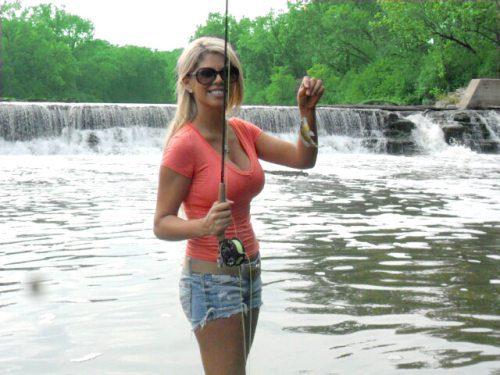Finally undestand fish fingers
Results 1,726 to 1,750 of 3085
Thread: The Fish Thread
-
04-09-2013, 06:48 PM #1726
-
05-09-2013, 08:41 PM #1727
-
05-09-2013, 09:08 PM #1728
-
05-09-2013, 09:10 PM #1729
-
06-09-2013, 04:15 PM #1730
Fishy Friday





-
07-09-2013, 09:59 AM #1731
A FIsh car from the Burning Man event this year.

-
07-09-2013, 11:05 AM #1732
-
07-09-2013, 11:14 AM #1733
-
09-09-2013, 12:48 PM #1734
-
09-09-2013, 12:56 PM #1735
-
10-09-2013, 01:43 AM #1736
A new type of snailfish was found living at a depth of 7,000m (23,000ft) in the Peru-Chile trench of the south-east Pacific Ocean – an area previously thought to be free of fish.
Oceanlab, University of Aberdeen – a new type of snailfish
The white fish, with distinctive large fins.

-
10-09-2013, 07:27 AM #1737
-
10-09-2013, 03:36 PM #1738
^
a possibility,
maybe they should name it the
White Flight Fish
-
10-09-2013, 11:32 PM #1739
-
12-09-2013, 08:21 AM #1740
-
13-09-2013, 05:02 PM #1741
Fishy Friday!





-
13-09-2013, 05:20 PM #1742
-
13-09-2013, 05:22 PM #1743
-
13-09-2013, 05:24 PM #1744
-
14-09-2013, 01:29 AM #1745
Steamed Fish.....





-
14-09-2013, 02:29 PM #1746
For the first time, a large Pacific barreleye fish - complete with transparent head - has been caught on film by scientists using remotely operated vehicles at the Monterey Bay Aquarium Research Institute. The deep-sea fish's tubular eyes pivot under a clear dome
zxcA Deplorable Bitter Clinger
-
14-09-2013, 03:32 PM #1747
-
14-09-2013, 03:54 PM #1748
Fancy a risky sport? Try fishing:
http://www.nbcnews.com/science/light...ist-6C10436425
Most lightning deaths in the United States occur while people are enjoying outdoor activities, with fishing the most deadly, government weather officials say.
From 2006 to 2012, 238 people died after being struck by lightning in the country — 82 percent of them male. Of the total number of victims, 152 were taking part in leisure activities, according to new findings from the National Weather Service .
Fishing topped the list with 26 lightning deaths, followed by camping with 15 deaths, boating with 14, soccer with 12 and golf with eight, NWS officials said. Other lightning victims died while at the beach, swimming, walking, running or picnicking. [Electric Earth: Stunning Images of Lightning]
Activities such as fishing and camping may be most hazardous during a storm because they often require extra time to take shelter in a safe place, explained John Jensenius, a lightning safety specialist with the NWS.
"People often wait far too long to head to safety when a storm is approaching, and that puts them in a dangerous and potentially deadly situation," Jensenius said in a statement.
So far this year, seven people have been killed by lighting — three of them men who were fishing, according to NWS data.
The findings were announced as the NWS kicks off its National Lightning Safety Awareness Week just in time for summer — peak thunderstorm season.
Lightning deaths in the country have been on a decades-long decline, which experts often attribute to better education about lightning safety. Since 2001 — the year the NWS campaign launched — there have been 37 lightning deaths in the United States annually, down from an average of 73 in the years before the campaign began. (Compare that further to the 1940s, when lightning deaths averaged above 300.)
Jensenius said the NWS campaign has been especially effective in the golf community. "We believe our outreach has made a huge difference since lightning-related deaths on golf courses have decreased by 75 percent," he said in a statement.
The NWS says the best way to avoid injury or death by lightning is to monitor the weather and cancel or postpone outdoor activities when a thunderstorm is rolling in. Lightning can strike from 10 miles (16 kilometers) away and the best place to take shelter is a building with four walls and a roof, or a car — in other words, a hut, cabana or tent will not save you from a flash of lightning, the NWS says.I see fish. They are everywhere. They don't know they are fish.
-
14-09-2013, 04:06 PM #1749
-
14-09-2013, 04:47 PM #1750or TizYou?
































- Join Date
- Mar 2007
- Last Online
- Yesterday @ 10:24 PM
- Location
- Oriental Mindoro, Philippines
- Posts
- 6,562
Rock fishing is by far the most dangerous sport in Australia.
One of my cousins was killed as a teenager back in the 1970s.
A freak wave washed him off the rocks just south of Sydney.
He was a strong swimmer, but it was impossible to swim back onto the rocks.
He tried to swim out around the headland and come back in on the sandy beach.
They found his body 3 days later.
Deadly rock fishing | Newcastle Herald
TIME and again NSW government ministers have rejected calls to make wearing a life jacket compulsory for people who fish from the rocks of the state’s coast, and each time they spin the same line. NSW is not a nanny state, they say. The emphasis should be on education, not legislation. The government will erect more signs warning of the danger. Rock fishermen must exercise common sense.
Time and again it doesn’t work. Tragically. The terrible loss for three Lake Macquarie families at the weekend, for their friends and for the community, is not eased by the fact that the three young people who are believed to have been swept to their deaths while rock fishing near Catherine Hill Bay were members of a long procession of anglers heading to their death in the surging sea off popular rock-fishing haunts north and south of Sydney.
Six other people have been swept to their death from the rocks of that short strip in the past two years; just over two years ago, in May, five people of Chinese descent drowned when they were washed from the same spot being fished by the Lake Macquarie three at the weekend. Eight people died while rock fishing in NSW in that month of May. The average annual death toll among people who fish from rocks in NSW is eight, making it Australia’s most dangerous sport. No other sport in Australia claims as many lives, and if the death toll is measured against the number of participants and the number of excursions rock fishing must be an extremely dangerous sport.
While the death rate among rock fishermen has been consistent over many years, recently people of Asian descent have been making up two-thirds of the sorry toll, and the NSW government has been funding rock-fishing safety workshops for people of Asian descent.
If the emphasis is on education it hasn’t been emphatic enough. And it never will be. Just as in every voluntary pursuit, people who go rock fishing are confident they will be safe, that they will not be swept off the rocks, that they know what they are doing, and you may have read in this paper yesterday of one mother’s confidence that her son and the other two would have taken every precaution, that they were experienced and sensible.
Many people who die rock fishing are experienced and sensible and take every precaution bar the most important one, wearing a life jacket. It is far and away the precaution most likely to save the life of a person swept from coastal rocks, yet successive NSW governments have rejected calls to make the wearing of a life jacket compulsory. Less than a year ago a Newcastle coroner, Mark Buscombe, recommended that the government make lifesaving devices compulsory for rock fishermen, and he was not the first coroner to do so.
That recommendation was sadly pertinent at the weekend, and the best the state government could come up with on Sunday was that it was reviewing a report on best practice for rock-fishing safety. The government, a spokesman told us, ‘‘is already running educational safety programs about rock-fishing safety’’!
The government’s fear of being seen as a nanny is puzzling because NSW is indeed a nanny state. Think absurd OH&S requirements, pool fences, seatbelts, school zones, bicycle and motorbike helmets, smoking bans, Responsible Service of Alcohol, poker machine warning signs.
And consider the government’s concern for the safety of people who fish from small boats. Such a boat heading out through the heads must have life jackets, anchor, bailing bucket or pump, compass, orange flares, red flares, fire extinguisher, a map on paper, marine radio, emergency radio beacon, oars or second motor, a horn, a fluorescent V sheet, a waterproof torch and water. All occupants of the boat must wear a life jacket while crossing the bar.
Anyone engaged in the nation’s most dangerous sport is not constrained by a single safety requirement, even though a single safety requirement, the wearing of a life jacket, could very well save their life.
Should a life jacket be compulsory for rock fishermen? Should rock fishing be banned on public land?Last edited by TizMe; 14-09-2013 at 04:54 PM.
Thread Information
Users Browsing this Thread
There are currently 1 users browsing this thread. (0 members and 1 guests)





 Reply With Quote
Reply With Quote
















